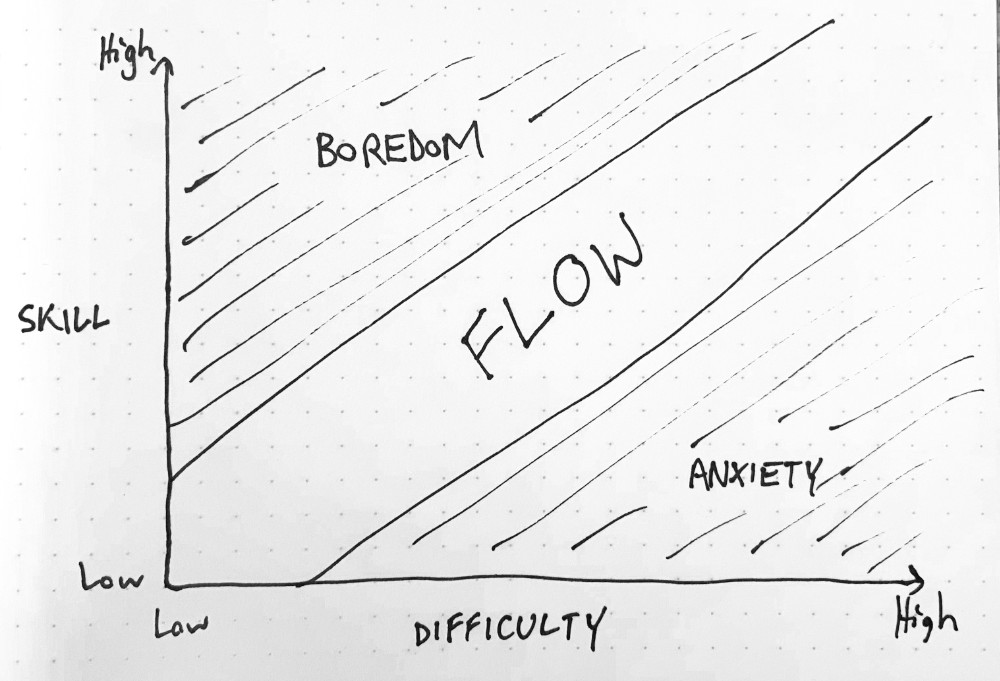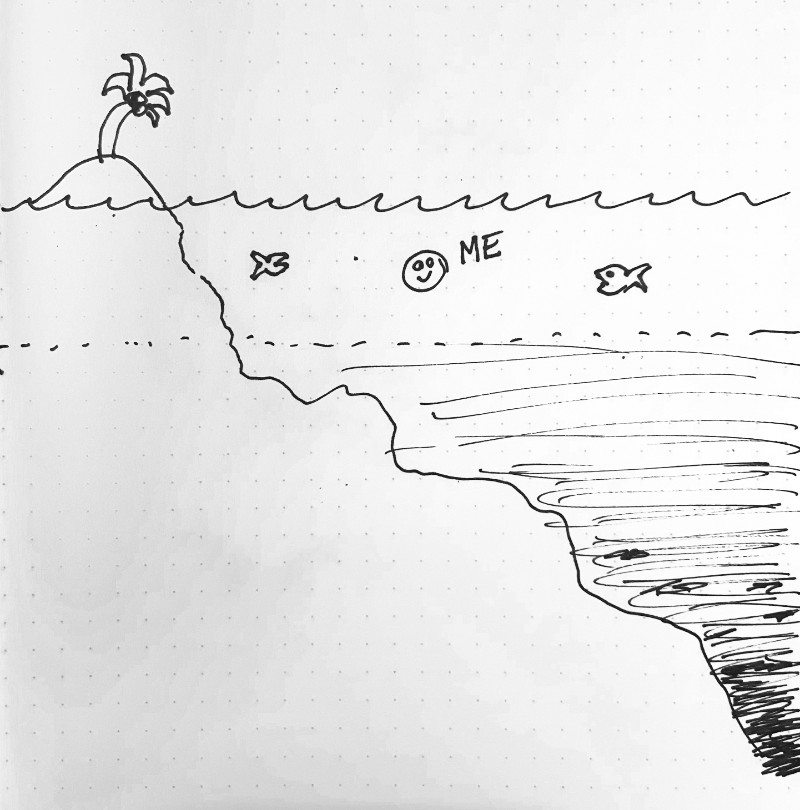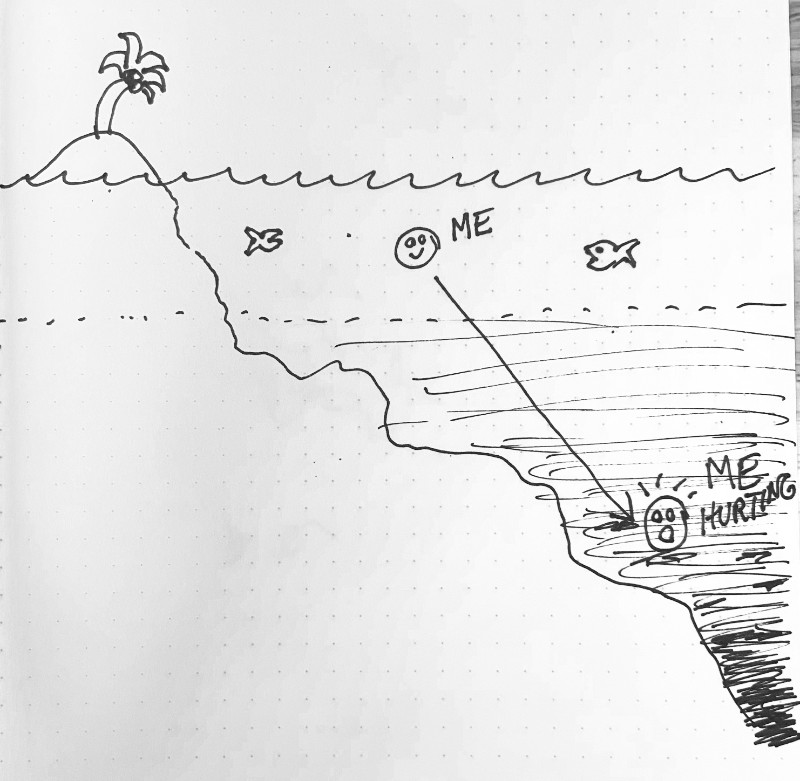Deep Work is not what I thought it was
03 Nov 2022
I used to think that Deep Work felt something like this:
Your calendar is clear, and you’ve turned off notifications. You settle into your desk chair and start on the task at hand. It takes a bit of time to find the zone but eventually you get there (sort of like falling asleep).
Time melts away. Everything flows. You look up at the clock and hours have passed. You’ve made significant progress on the work and you feel satisfied.
I was wrong.
Ever since the summer, I have a new understanding about the quality of my best work. Now I know where “deep” is.
Flow feels great
Flow is that state of blissful concentration where time melts away. It is achieved when you find the goldilocks zone between challenge and competency. You can reliably find it with practice. Certain tasks like programming or practicing musical instruments lend themselves well to finding flow.

Flow is wonderful. It feels great. And it makes you very effective. When you are in flow, progress happens in a smooth, linear motion.
But Flow is in the shallows. I now know that there are depths of work that lie far beyond this point.

Deep Work hurts
Something important changed for me this summer. I was lucky enough to work on a project that combined these qualities:
- The problem was one I cared a lot about. It was related to my true purpose in life.
- The problem had never been “solved” (and probably can’t be).
So what happens when you combine an unsolvable problem with the soul-driven motivation to never quit working on it? Pain is what happens. You learn things and try things, and yet you repeatedly fail. You feel like you are literally smashing your head against a wall. It hurts to put all of your mental energy towards a big, hairy, unsolved problem.
It is not like Flow at all. It is painful, you don’t feel effective, and progress is definitely not linear. It’s harder to get to the place you need to be because your natural tendency is to avoid pain.
Something incredible happened when I found a hard problem that mattered to me. I left the shallows. I went deeper.

How to Work Hard
Many problems have a hard core at the center, surrounded by easier stuff at the edges. Working hard means aiming toward the center to the extent you can. Some days you may not be able to; some days you’ll only be able to work on the easier, peripheral stuff. But you should always be aiming as close to the center as you can without stalling.
Paul Graham’s essay about how to work hard captures the nature of the Deep Work I discovered this summer. If I’m being honest with myself, I can admit that I’ve often avoided finding the center of hard problems. It was too easy to be effective, and I was rewarded for so many years for that kind of work: the kind where you take on a clearly defined, closed problem and then deliver a good solution quickly.
I believe I always had the skills and the incentives aligned, but I was missing the purpose. Purpose is what pushed me towards pain.
This is what I call “Deep Work” now. It’s about recognizing that center, getting there quickly, and staying there as long as I can. The imagery of the deep suits me. It’s murky down there, and it hurts to breathe. On your first dive, you won’t last very long, and you’ll have to retreat to the shallows. But with practice, you will get there faster and you will stay there longer.
Eventually, you’ll discover things. Things that nobody else has ever seen.
If you want to follow along as I learn to build a business, you can follow me on Twitter or enter your email below.
Email subscribers will know first when I write new articles and release products. I value your trust and will repay it in kind.